Your floors are the foundation of your home’s entire aesthetic—literally and visually. Choosing the wrong flooring can make a space feel dated, disjointed, or even smaller, while the right selection elevates every room, adds value, and tells a cohesive story. With 2025 bringing bold shifts in design philosophy, it’s crucial to move beyond generic choices and embrace trends that blend longevity with personality. Forget “safe” neutrals that fade into oblivion; this year is about warmth, texture, and intentional storytelling underfoot. As Adam Vester, Senior Director of Design at Mohawk, states: “The future of flooring will be all about warmth, natural aesthetics, and timeless, well-crafted materials.” This isn’t about fleeting fads—it’s about creating a home that feels grounded, inviting, and uniquely yours. Let’s explore 15 designer-approved flooring decor ideas to elevate your space this year.
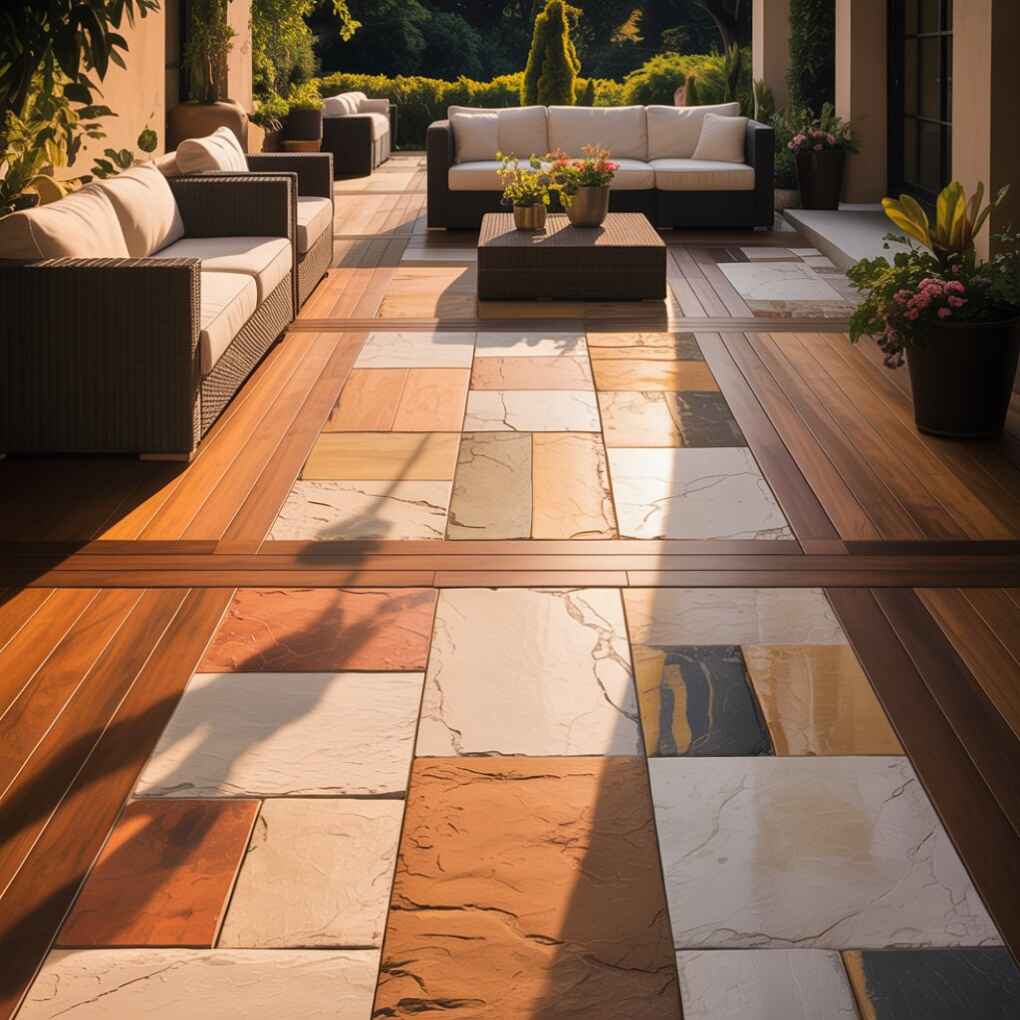
1. Warm-Toned Hardwood with Organic Finishes
Ditch the icy blondes and cool grays dominating the last decade. 2025 embraces honey, caramel, and deep chestnut hardwoods that radiate coziness. These finishes pair beautifully with both modern and traditional furniture, creating a seamless flow. The key is organic, slightly imperfect finishes that highlight wood’s natural character—think hand-scraped textures or wire-brushed surfaces that add subtle depth without overwhelming the space.
Warm-toned hardwoods are particularly effective in open-concept layouts, unifying kitchens, dining, and living areas into one harmonious zone. They also reflect light in a way that makes smaller rooms feel brighter and more expansive. Avoid overly glossy finishes; matte or satin sheens enhance the organic, lived-in appeal.
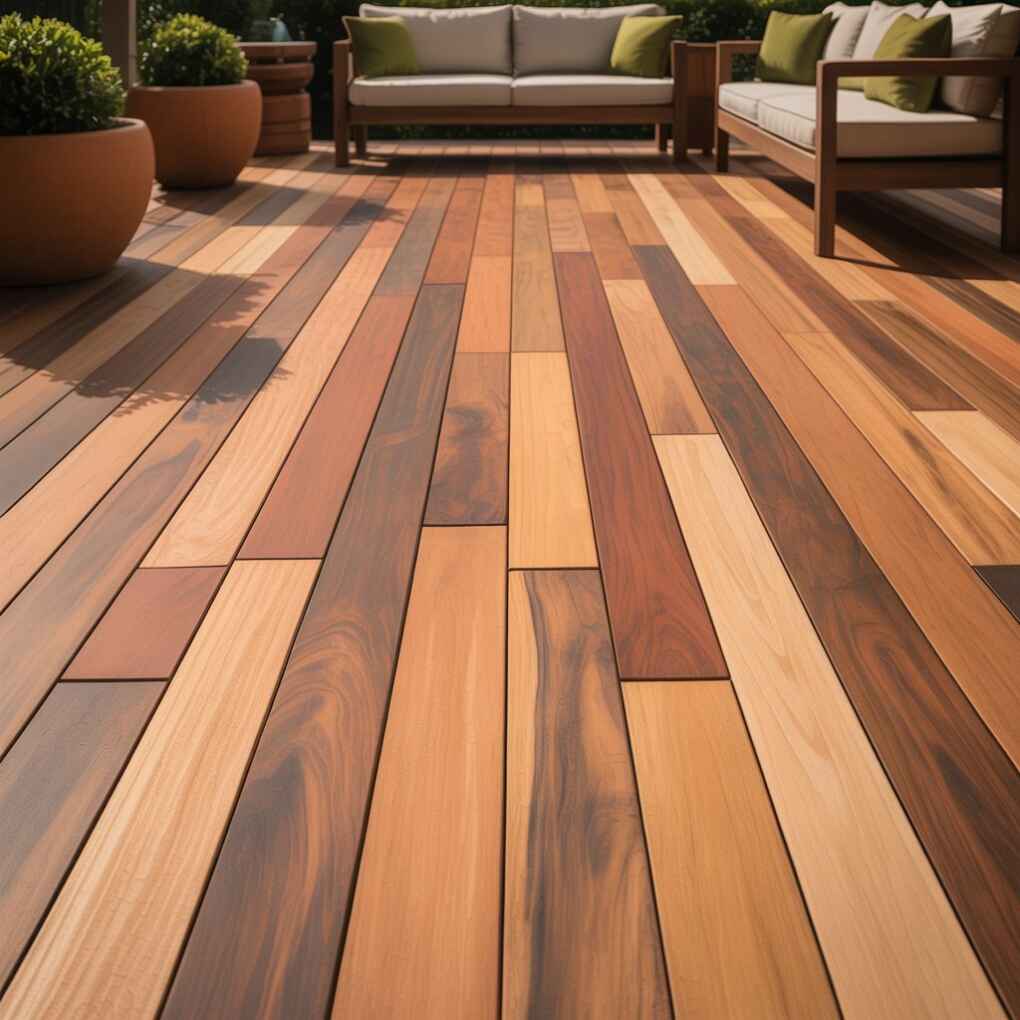
Pro Tip: For authenticity, ask for “tumbled” or “distressed” finishes. These treatments mimic years of natural wear, adding instant character without looking artificially aged. Pair with earthy rug palettes like terracotta or olive green.
2. Biophilic Cork Flooring
Cork is having a major moment as designers prioritize sustainability and connection to nature. Beyond its eco-credentials (harvested without harming trees), cork offers surprising comfort underfoot and natural thermal insulation. Its unique, organic patterns—reminiscent of tree bark or abstract landscapes—add warmth to kitchens, bedrooms, and even bathrooms when properly sealed.
Unlike synthetic options, cork responds to foot traffic with a subtle give, reducing joint strain and noise. It’s also naturally mold-resistant, making it ideal for moisture-prone areas. Modern cork floors come in rich, stained hues like burnt umber or slate gray, moving far beyond the pale beige of the past.
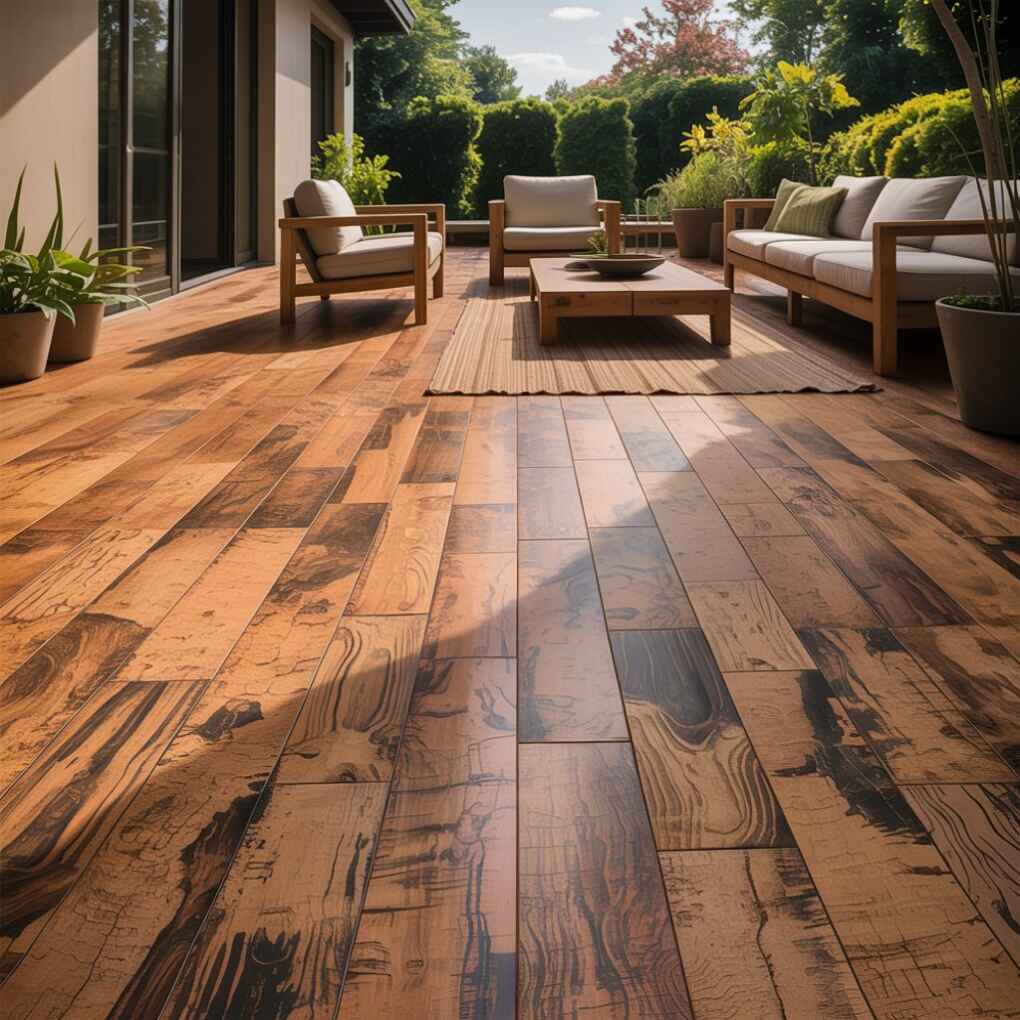
Pro Tip: Choose pre-finished cork for durability. Unfinished cork requires frequent resealing. Pair with jute or seagrass rugs to amplify the natural aesthetic. As noted in aol.com, biophilic design is extending “all the way down to the floor.”
3. Plush Wall-to-Wall Carpet in Bedrooms
Carpet is back, but not the wall-to-wall beige you remember. Designers like Kristen Dittmar are championing statement-making wall-to-wall carpet in bedrooms, especially in mountain or spa-style homes. Think deep, velvety piles in warm terracotta, sage green, or charcoal—colors that create a cocooning effect. Plaid patterns and textured designs add depth and visual interest without overwhelming the space.
This trend rejects the “builder-grade” aesthetic by focusing on texture and color. High-pile carpets in bedrooms provide a luxurious contrast to hard-surface flooring in other rooms, emphasizing the bedroom as a sanctuary. It’s particularly effective in homes with open layouts where defining zones is key.
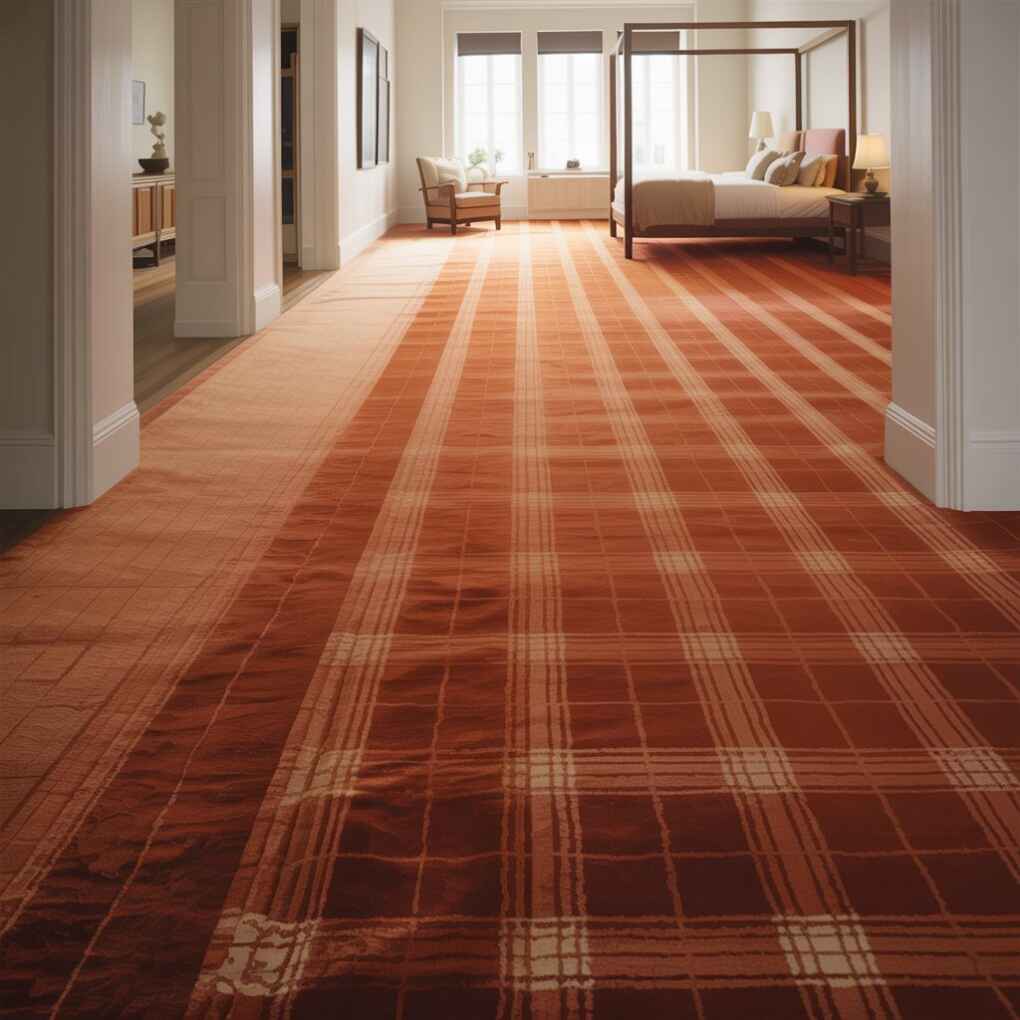
Pro Tip: Opt for 0.5–0.75″ pile height for comfort without trapping dirt. In high-traffic zones, use a non-slip underlayment. As redesigndaily.com notes, Becky Cash of Victoria Carpets highlights “plush, high-pile carpets in warm tones” featuring “bold geometric patterns.”
4. Black-and-White Checkerboard Tile
A retro classic is resurging with modern confidence. Black-and-white checkerboard tile works in entryways, kitchens, and even bathrooms to create instant visual drama. The key is scale: large 12×12″ tiles feel contemporary, while smaller 4×4″ mosaics evoke vintage charm. Use matte finishes to avoid a sterile look—glossy tiles can feel clinical in today’s warm-focused design landscape.
This pattern acts as a built-in focal point, reducing the need for additional decor. In kitchens, it grounds busy cabinetry or stainless steel appliances. In entryways, it sets a sophisticated tone from the moment you step inside. Avoid using it in small, windowless rooms where it might feel cramped.
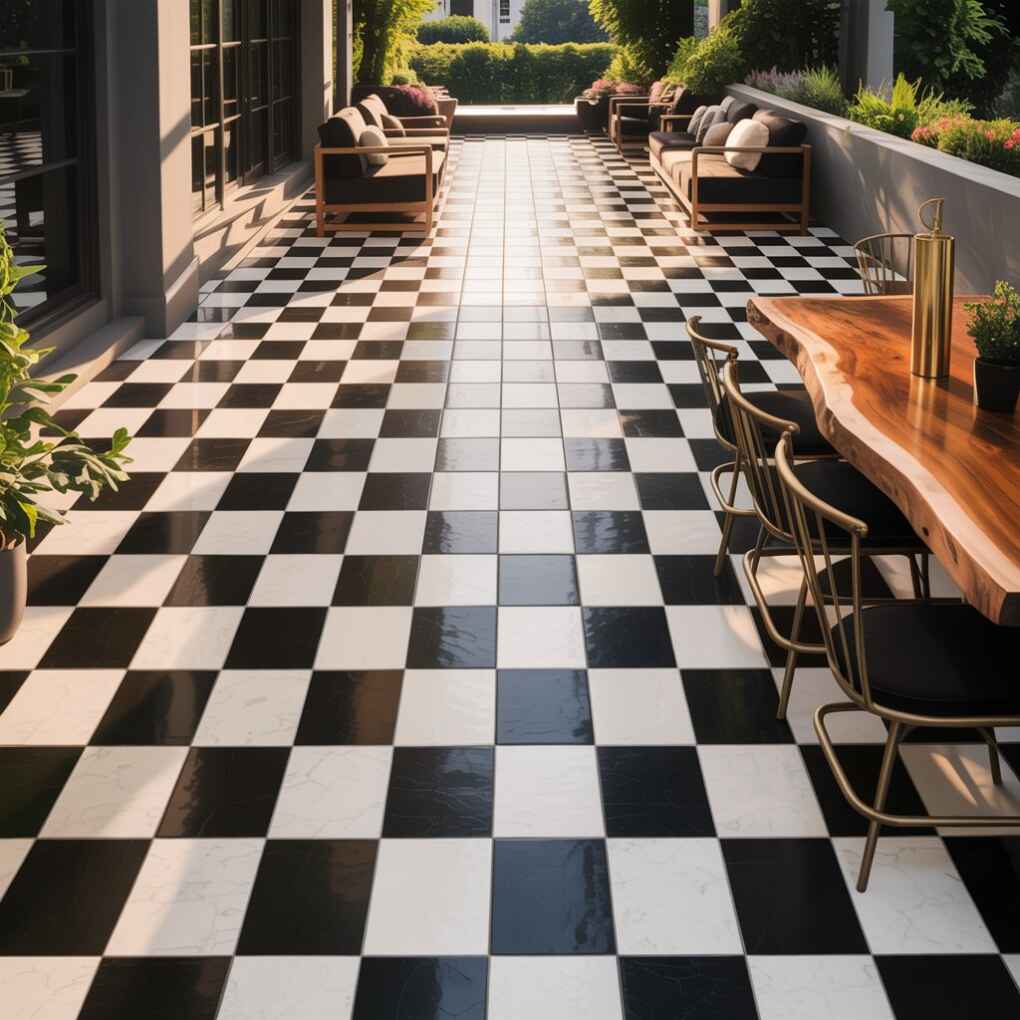
Pro Tip: Pair with warm wood accents (like a live-edge console table) or brass fixtures to soften the contrast. As housebeautiful.com states, “checkerboard tile (yes, black and white is back in a big way)” is a top 2025 trend.
5. Sustainable Reclaimed Wood
Reclaimed wood flooring delivers unmatched character with a meaningful story. Salvaged from old barns, factories, or homes, each plank has unique distressing, nail holes, and color variations that factory-made wood can’t replicate. It’s inherently sustainable, reducing demand for new timber while preserving historical materials. Rich, dark stains or natural oil finishes highlight its history without feeling “old.”
This choice resonates deeply with the quiet luxury movement—valuing heritage over overt branding. It works best in spaces with ample light to showcase its texture. Avoid pairing it with overly ornate furniture; let the floor be the statement piece.
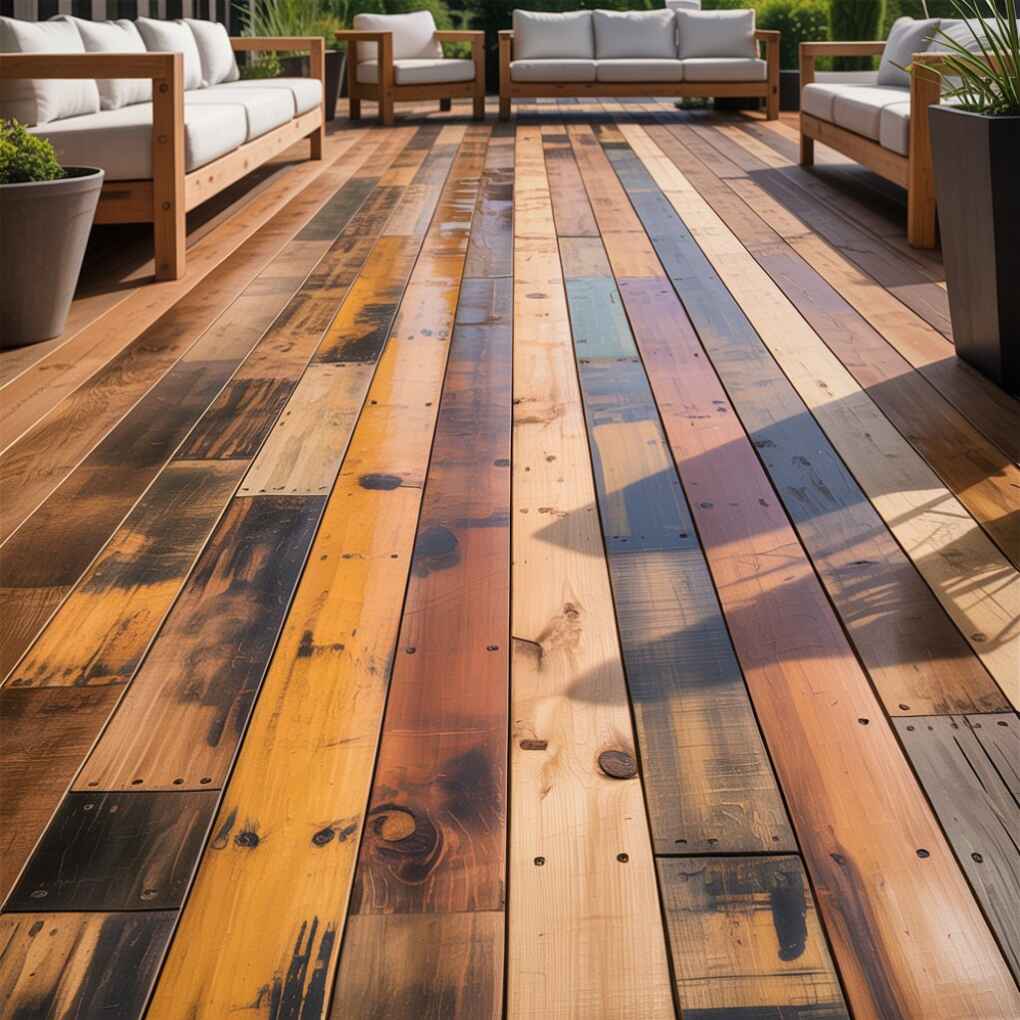
Pro Tip: Inspect for structural integrity. Reclaimed wood can be uneven; choose an experienced installer. Pair with minimalist furniture to let the floor shine.
6. Terracotta Tile with Modern Grout
Terracotta’s earthy, reddish-brown hues embody 2025’s warm aesthetic. Modern installations use large-format tiles (24×24″ or bigger) to reduce grout lines, giving it a cleaner look. The magic happens with grout: dark charcoal or black grout creates a bold grid pattern, while warm beige grout yields a seamless, organic feel. It’s perfect for kitchens, sunrooms, or entryways.
Terracotta brings instant warmth to cool climates and complements both rustic and modern interiors. Its natural variations ensure no two floors look identical. Seal properly to prevent staining—especially in kitchens.
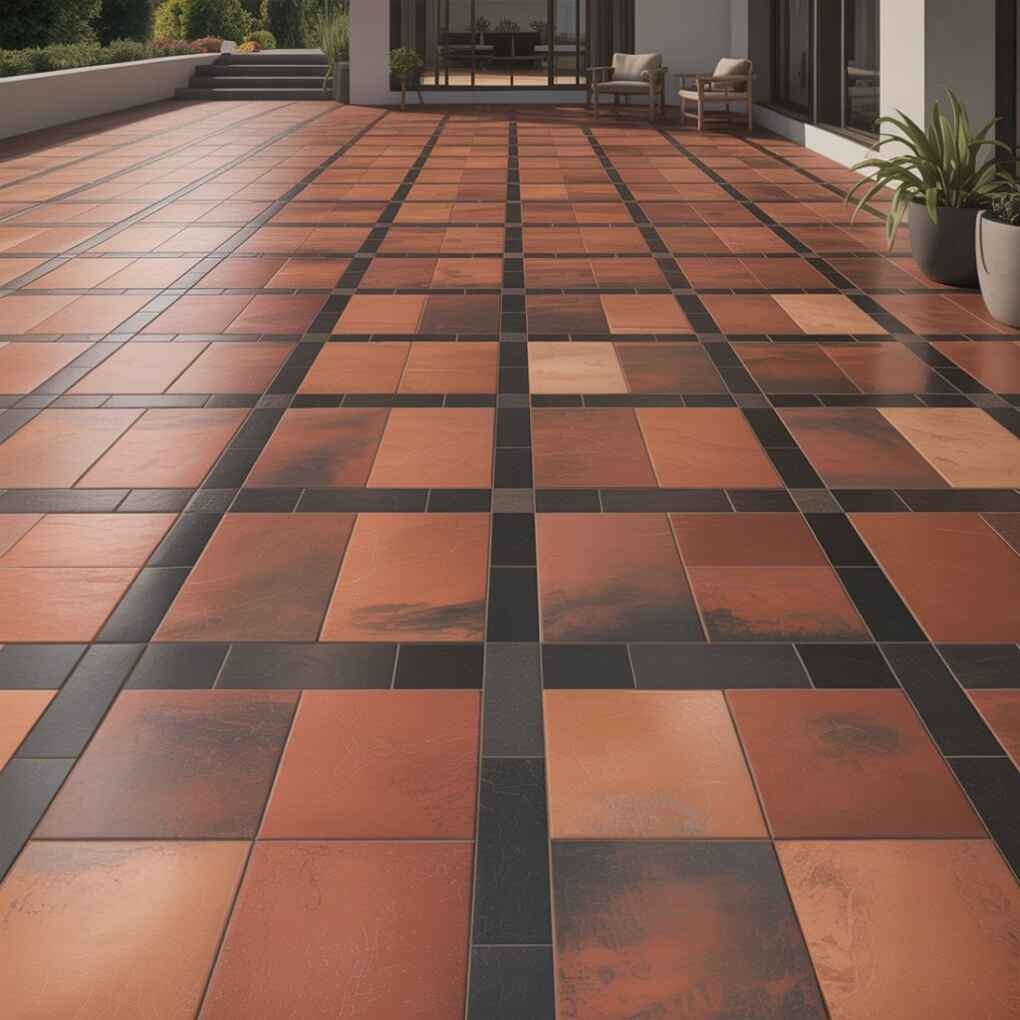
Pro Tip: Choose pre-sealed terracotta for easier maintenance. In open layouts, use it in the kitchen and transition to wide-plank hardwood in the living area for visual flow.
7. Textured Concrete with Stained Accents
Gone are the days of drab, industrial concrete. Modern textured concrete features subtle variations in tone and finish—think lightly troweled surfaces or stamped patterns that mimic stone. Stained with warm earth tones (ochre, burnt sienna) or even soft blues, it becomes a sophisticated, low-maintenance option for modern homes.
This trend appeals to minimalists and sustainability advocates alike. The raw aesthetic pairs perfectly with Japandi or quiet luxury styles. It’s ideal for open-concept spaces where durability is key, like kitchens and living areas.
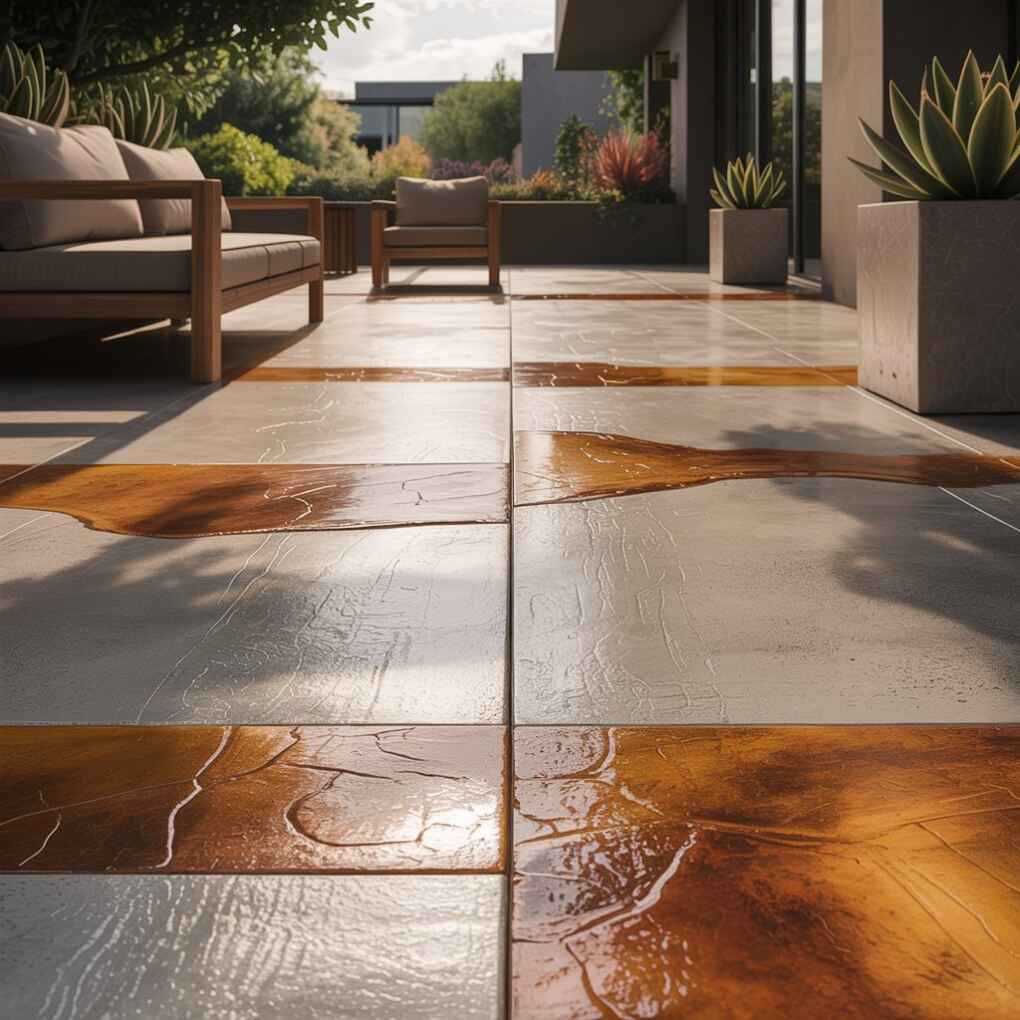
Pro Tip: Add warmth with layered rugs. A textured concrete base lets you change your room’s mood seasonally with a simple rug swap. As aol.com observes, 2025 will be a “warm, inviting, and interesting year” in home design.
8. Layered Rugs Over Hardwood
Don’t hide your beautiful hardwood—enhance it. Layering rugs (e.g., a smaller woven jute over a larger neutral flatweave) adds dimension and defines zones in open layouts. Start with a large, textured base rug (like a wool herringbone), then add a smaller patterned piece in a seating area. This approach is more dynamic than a single monolithic rug.
This technique is perfect for homes with existing hardwood where replacement isn’t feasible. It also allows for easy style updates—swap the top rug for seasonal changes. Avoid overly busy patterns that compete with the wood grain.
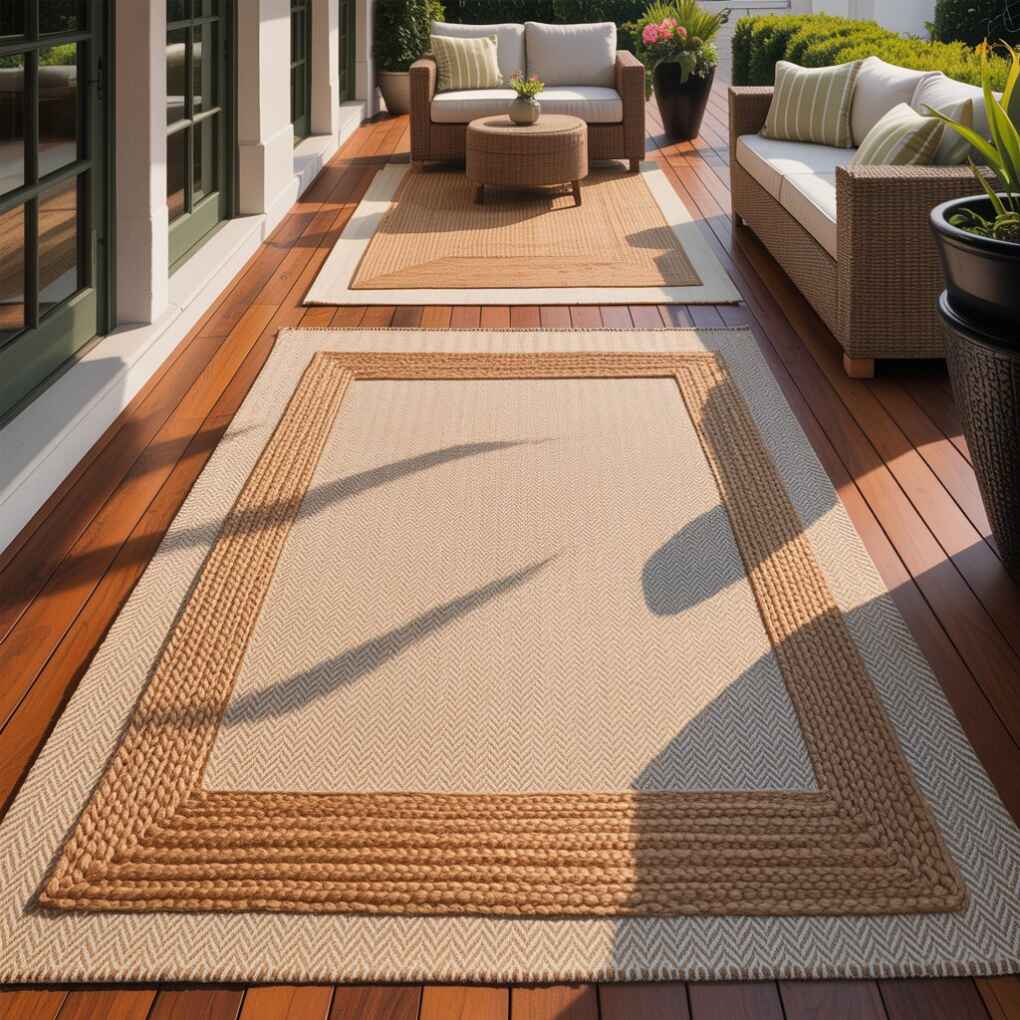
Pro Tip: Leave 18–24 inches of exposed hardwood around the rug’s perimeter. This “frame” prevents the space from feeling crowded.
9. Bold Geometric Patterns in Carpet
Move beyond solids: carpets with geometric patterns (zigzags, triangles, or abstract shapes) are trending in bedrooms and home offices. Unlike subtle textures, these make a deliberate design statement. Warm, tonal colorways—like terracotta triangles on a rust background—keep it sophisticated rather than childish.
This trend aligns with the “luxury twist” on wall-to-wall carpeting highlighted by housebeautiful.com. It works best in low-traffic rooms where the pattern won’t show wear quickly. In home offices, it adds energy without visual chaos.
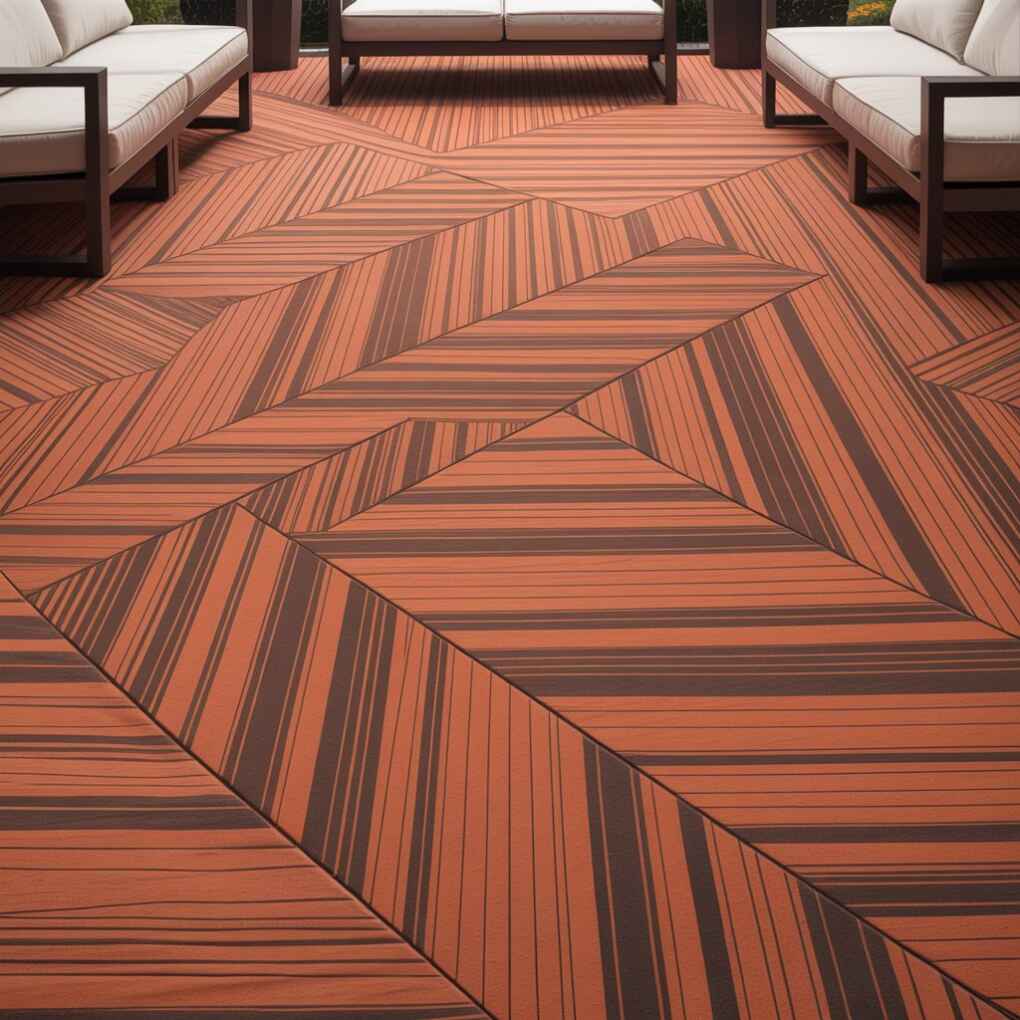
Pro Tip: Stick to 2–3 colors max. Too many hues will make the pattern feel dated. Pair with solid-colored furniture to balance the look.
10. Wide-Plank Ash Flooring
Ash wood’s subtle, flowing grain and pale, creamy tones offer a fresh alternative to oak. At 8–10″ wide, planks create fewer seams, making rooms feel larger and more serene. Its natural light reflectivity brightens north-facing rooms, while a matte finish maintains warmth. Ash takes stains beautifully, allowing customization from pale oatmeal to deep espresso.
This choice appeals to fans of Japandi (Japanese-Scandinavian) design, emphasizing simplicity and natural materials. It’s less common than oak, giving your home a unique edge without being trendy.
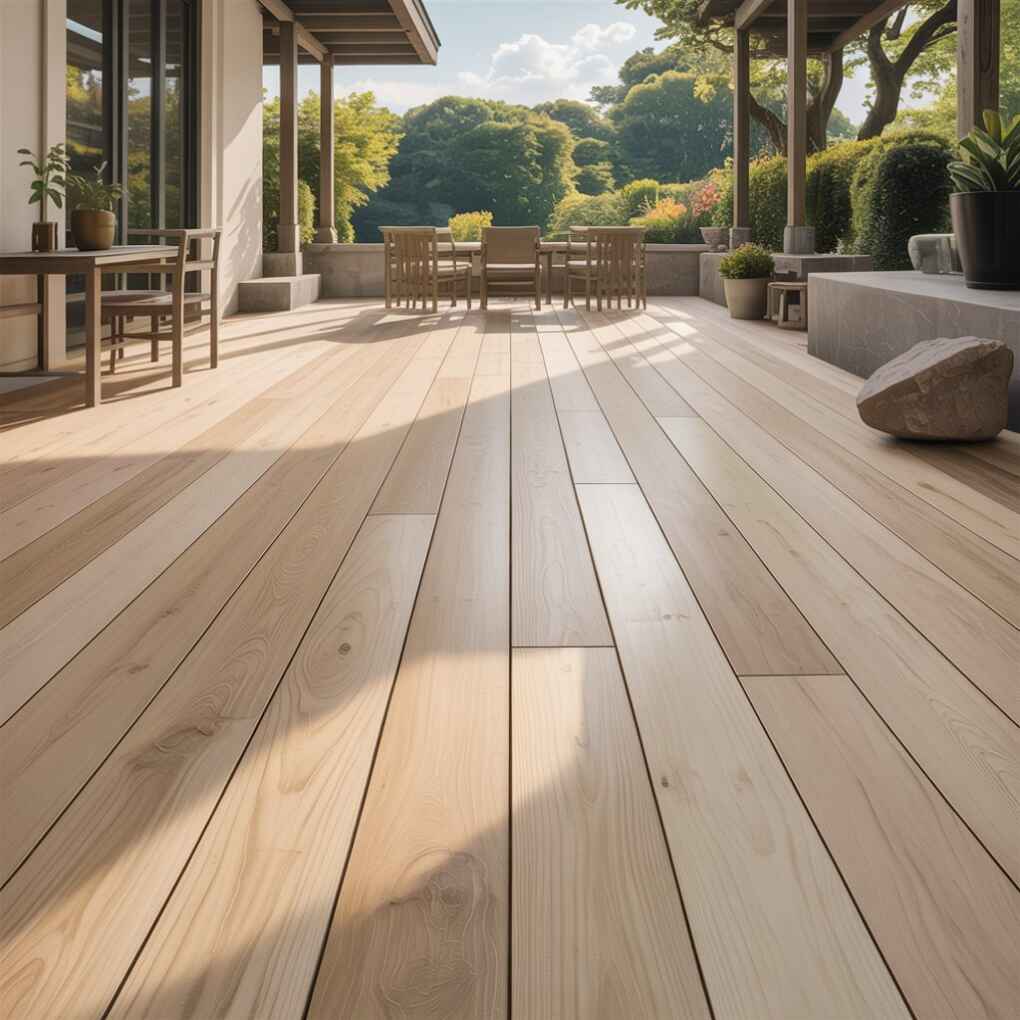
Pro Tip: Choose “fumed” ash for a modern gray tone without paint. This chemical-free process darkens the wood using ammonia fumes, enhancing grain visibility.
11. Stone Composite in Kitchens
Durable and stylish, stone composite (a blend of natural stone particles and resin) mimics limestone or slate without the maintenance headaches. Large-format tiles (24×24″+) create a seamless, upscale look. Neutral palettes like “Savannah Beige” or “Mist Gray” work with both modern and farmhouse kitchens.
Unlike natural stone, composite resists stains, scratches, and moisture—critical for high-traffic kitchens. The subtle variations in tone mimic real stone while offering more consistency. Pair with matte black fixtures for contrast.
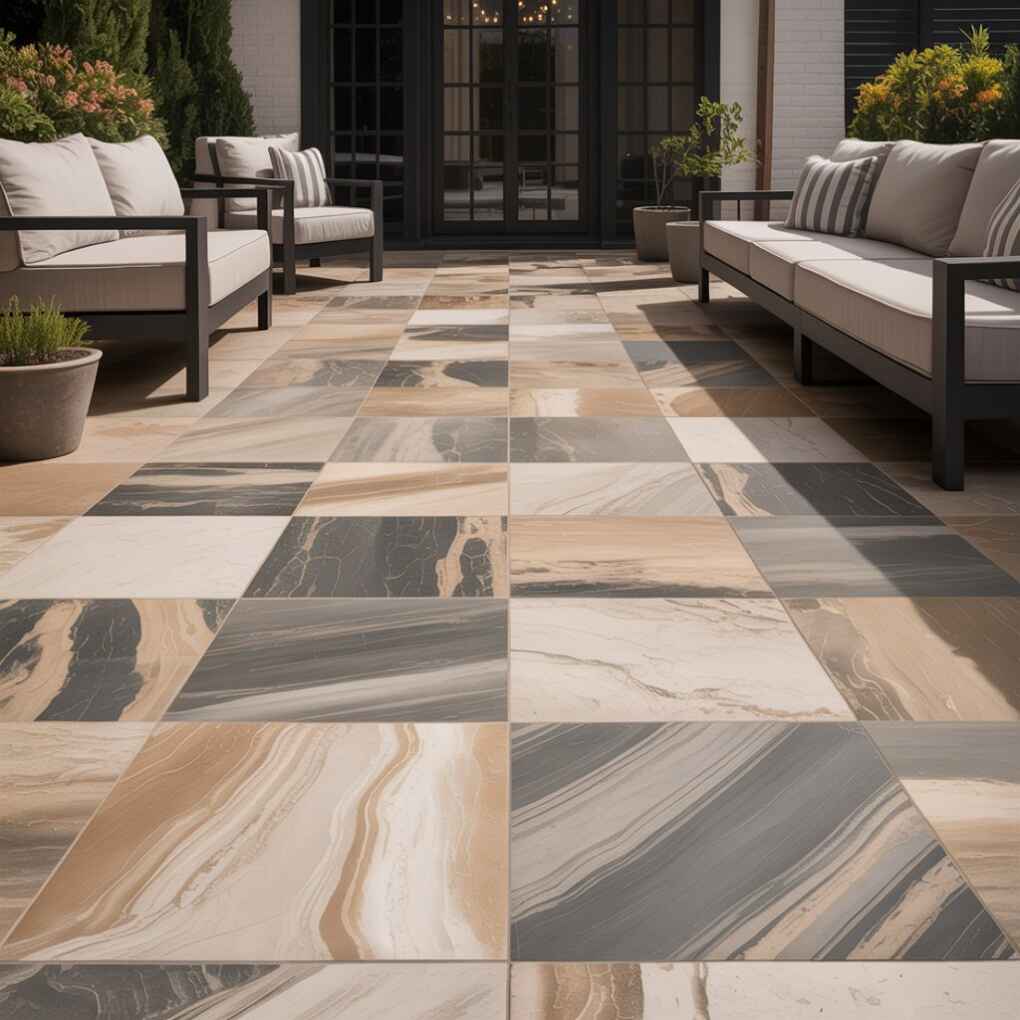
Pro Tip: Use underfloor heating with stone composite; it retains warmth better than tile. Avoid overly glossy finishes, which show footprints.
12. Matte Black Wood Flooring
For the daring, matte black hardwood creates a dramatic, modern foundation. It’s not for every home—best suited for spaces with ample natural light to prevent a cave-like feel. Pair with white walls, brass accents, and light wood furniture for striking contrast. The matte finish avoids the “plastic” look of high-gloss black floors.
This trend embodies “quiet luxury” by prioritizing quality over loud branding. It’s ideal for entryways or dining rooms where you want to set a sophisticated tone. Avoid in small, dark rooms.
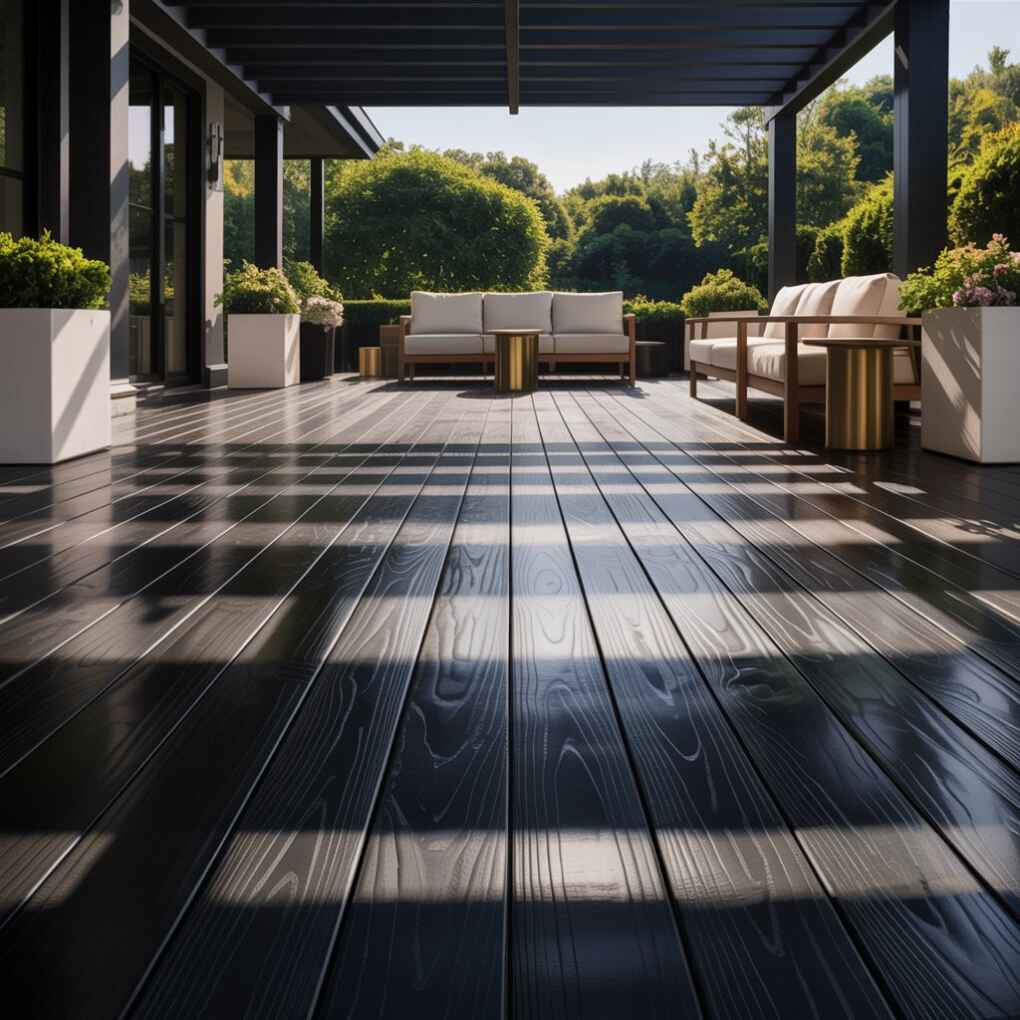
Pro Tip: Choose stained black wood, not painted. Staining penetrates the grain for a richer look. Maintain with wax-based cleaners to prevent scuffs.
13. Tumbled Stone in Dining Areas
Tumbled stone (like limestone or travertine) features soft, rounded edges and a slightly uneven surface that evokes old-world charm. Its warm, earthy tones and subtle color variations add texture without overwhelming. Perfect for dining rooms, where it grounds a statement table and creates an inviting atmosphere for gatherings.
Unlike polished stone, tumbled stone is less slippery and hides scratches well. Seal it annually to maintain stain resistance. Avoid in kitchens where heavy spills are common.
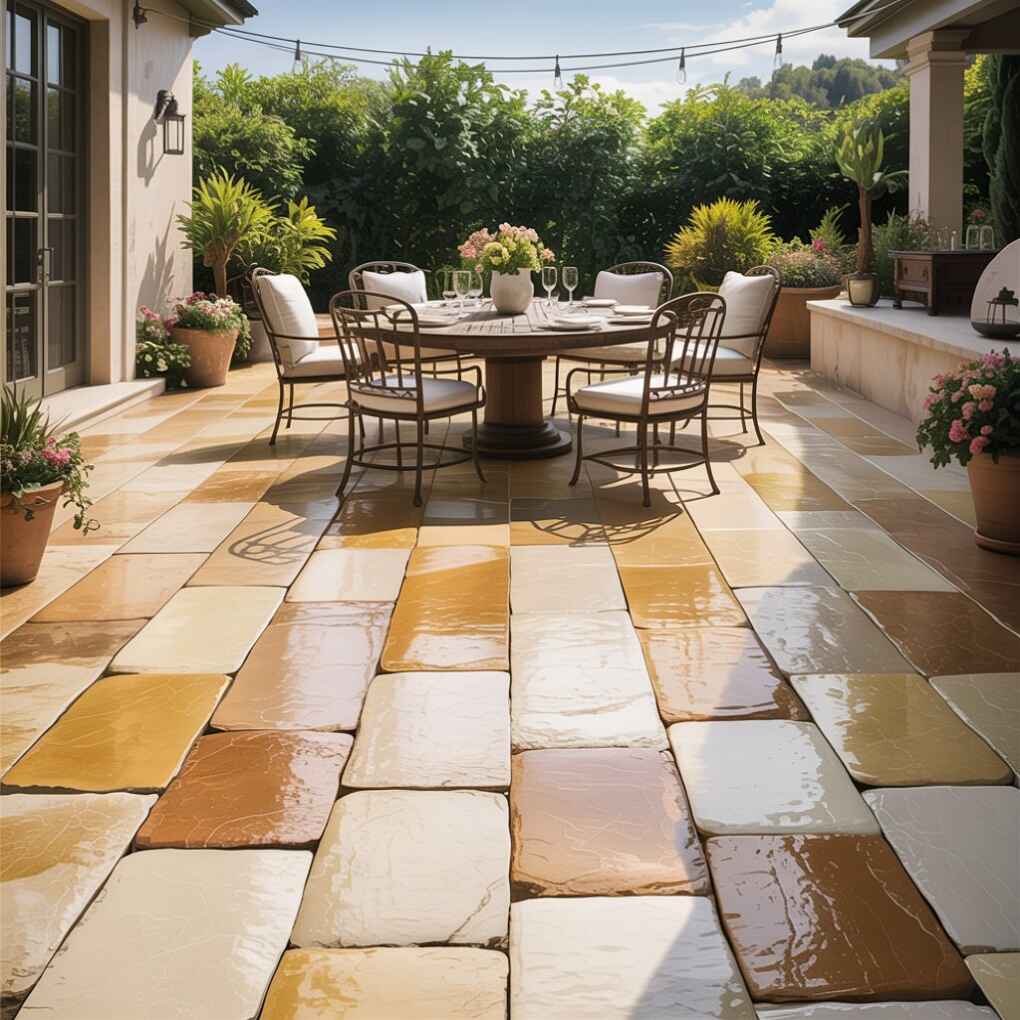
Pro Tip: Use small-format tiles (8×8″ or 12×12″) to enhance the handcrafted feel. Pair with a large, round dining table to soften angular grout lines.
14. Colored Concrete in Basements
Basements often feel like afterthoughts—until now. Colored concrete transforms these spaces into stylish living areas. Warm tones like ochre, sage, or terracotta make subterranean rooms feel inviting. The seamless surface is ideal for moisture-prone areas, and the low profile won’t eat into headroom.
This is a cost-effective solution for basement remodels. Stains or dyes are mixed directly into the concrete, so color won’t chip. Add a matte sealant for easy cleaning.
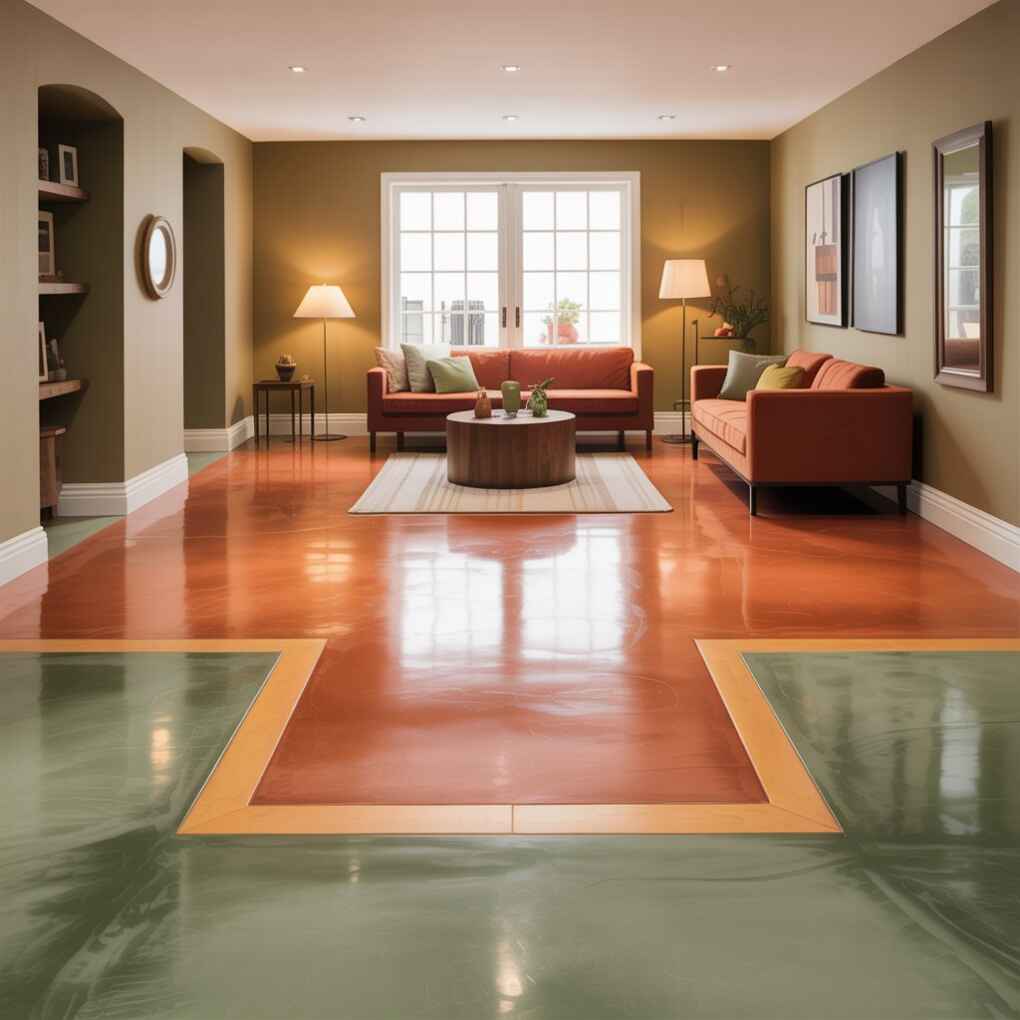
Pro Tip: Use a 4–6″ color border around the perimeter to add definition. This tricks the eye into perceiving the space as larger.
15. Mixed Material Transitions
Break free from uniform flooring. Intentionally transition between materials to define zones: hardwood in the living area, tile in the kitchen, and carpet in the dining nook. The key is cohesive color palettes—e.g., warm oak, beige tile, and terracotta carpet. Use metal or wood threshold strips to create clean, intentional breaks.
This approach is perfect for open-concept homes where “one size fits all” flooring feels impersonal. It adds architectural interest while serving practical needs (e.g., water-resistant tile near sinks).
Pro Tip: Keep transitions level—no tripping hazards. A professional installer is essential. As decorilla.com advises, ensure choices “complement each other in color and texture.”
Key Flooring Trends to Avoid in 2025
| Trend to Avoid | Why It’s Outdated | Better 2025 Alternative |
|---|---|---|
| Cool-Gray Hardwood | Feels sterile and dated | Warm honey or chestnut tones |
| Wall-to-Wall Beige Carpet | Lacks personality, shows dirt | Plush warm-toned patterned carpet |
| Glossy Porcelain Tile | Reflects harshly, feels cold | Matte-finish stone composite |
| Overly Distressed Wood | Looks cheap, not authentic | Subtly tumbled or wire-brushed finishes |
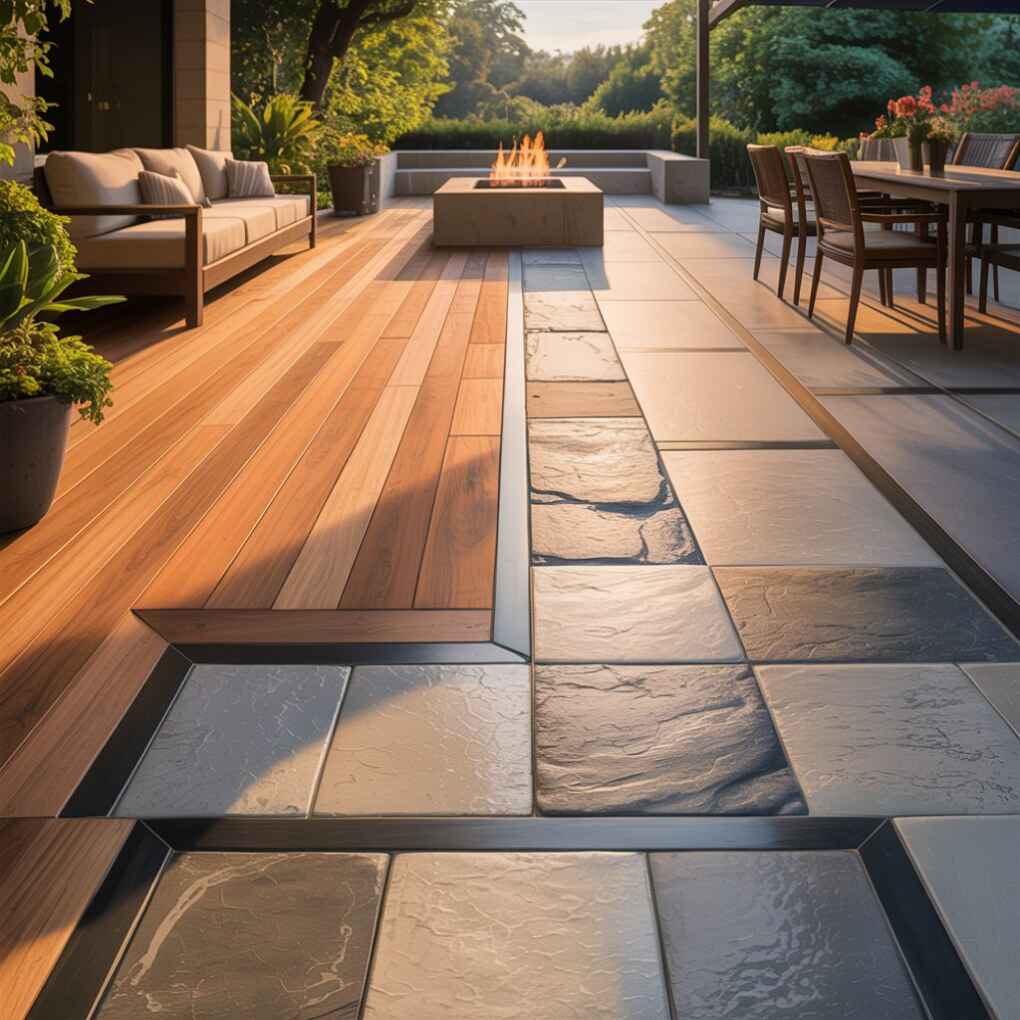
Final Thoughts: Your Floor, Your Foundation
Your flooring choice is the silent narrator of your home’s story. In 2025, the focus is on warmth, texture, and authenticity—not fleeting trends. Whether you’re drawn to the organic embrace of cork, the bold geometry of patterned carpet, or the timeless elegance of wide-plank hardwood, prioritize materials that make you feel something when you walk into a room. As designer Carrie from Penny Modern reminds us, avoiding costly mistakes starts with understanding what elevates a space versus what dates it redesigndaily.com.
Ready to transform your foundation? Book a free interior design consultation to explore flooring options tailored to your home’s unique layout and your personal style. Because the right floor isn’t just underfoot—it’s the soul of your sanctuary. Let’s create a home where every step feels intentional, inviting, and utterly you.
